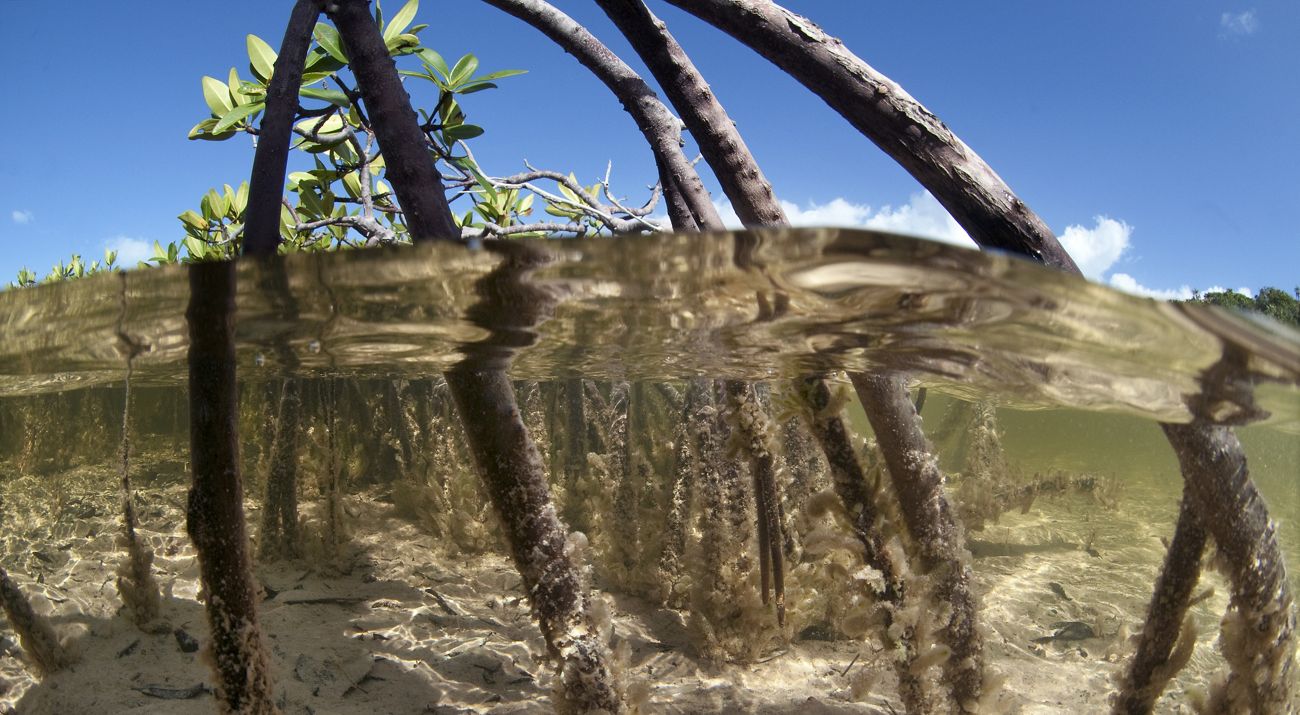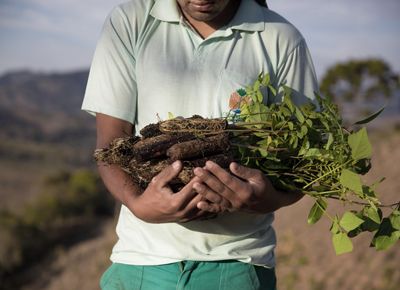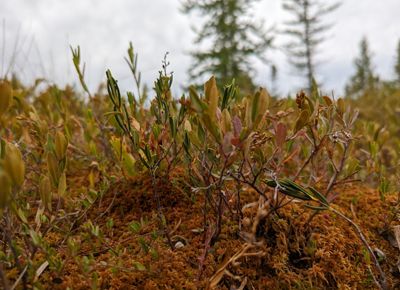Natural Climate Solutions Resource Center

In 2017, research led by The Nature Conservancy (TNC) demonstrated that natural climate solutions (NCS) have the potential to achieve up to one-third of the global greenhouse gas emission reductions needed to stabilize our climate. Since then, TNC scientists and partners have continued investigating how, when and where to invest in NCS to deliver on the world's most urgent climate goals.
Below you can find the latest science, research and case studies demonstrating how nature can help increase carbon storage and avoid greenhouse gas emissions around the world.

Overview
Deep Dive into Natural Climate Solutions
Forest Resources
Forests include any land that is not considered cropland with tree cover naturally > 25%, including tropical rainforests, dry forests, boreal forests, and tree plantations managed for wood products
-
Climate Mitigation Depends on Seed-Dispersing Wildlife
Seed dispersal disruption limits tropical forest regrowth Download the study
-
Rightsizing Reforestation
Addressing critiques refines global estimates of reforestation potential for climate change mitigation Download the study
-
Climate and Biodiversity
Variable impacts of land-based climate mitigation on habitat area for vertebrate diversity Download the study
-
Accounting for albedo change
Restoring tree cover changes albedo, which is the fraction of sunlight reflected from the Earth’s surface. In most locations, these changes in albedo offset or even negate the carbon removal benefits with the latter leading to global warming. Download the study
-
Priority science can accelerate agroforestry as a natural climate solution
The expansion of agroforestry could provide substantial climate change mitigation (up to 0.31 Pg C yr−1), comparable to other prominent natural climate solutions such as reforestation. Download the study
-
Liana cutting in selectively logged forests
Liana cutting in selectively logged forests increases both carbon sequestration and timber yields Download the study
-
High Forest Low, Low Deforestation: Perspectives from the VCM
Interviews with 30 carbon market practitioners about the appropriateness of the VCM for HFLD finance, perceived challenges and risks of HFLD credits, and ways to increase willingness to invest in HFLD areas. Download the report.
-
Funding for high forest, low deforestation (HFLD) areas
This report outlines potential incentive structures and business models that could create more equitable flows of finance to countries and jurisdictions that have historically maintained a high forest cover and low deforestation rates (HFLD). Download the report.
-
Tropical climate mitigation potential
New research suggests that cost-effective NCS could mitigate over half of national emissions in tropical countries. Download the study.
-
Potential carbon sequestration rate from natural forest regrowth
See the potential for carbon storage anywhere on the planet with this interactive tool. View the forest regrowth map.
-
Mapping carbon accumulation potential from global natural forest regrowth
New study provides best resolution data to determine potential carbon storage of natural forest regrowth as a NCS strategy. Download the study.

Rightsizing Reforestation: New Maps Show We Can’t Put Trees Everywhere
Latest science gives unprecedented clarity on where best to restore forest cover for climate—yielding 71-92% less area than previously estimated.
Croplands Resources
Croplands include any lands managed for annual or perennial crops, including agroforestry systems such as cacao, coffee, and intercropping. Agroforestry systems would be considered cropland even if they have > 25% tree cover. As a perennial crop, oil palm and other orchards arealso considered croplands
-
Adding trees to agricultural lands has major climate potential
New science and high-resolution mapping helps estimate the current and potential carbon storage of trees in non-forested portions of agricultural lands. View the research.
-
Review: Role of non-state actors in agroforestry
Key study identifies points of entry for non-state actors to increase smallholder incentives for agroforestry adoption in low and middle-income countries. Read abstract and download full study.

It’s Time to Embrace the Potential of Agroforestry as a Climate Solution
Adding native trees to agricultural lands not only supports biodiversity and improves farmer livelihoods—it can help address the climate crisis at a global scale.
Grasslands Resources
This biome includes prairies, steppes, shrublands, tundra, savannas, and other habitats with tree cover < 25%. This includes grazed and un-grazed lands.
-
Soils Revealed
Soil carbon can help combat climate change. This site tracks soil carbon change and have predicted the potential amount of carbon our soils could hold. Using that, you can see the areas where action can make the biggest impact. Access Soils Revealed.
-
Savanna fire management
Savanna fire management can generate enough carbon revenue to help restore Africa’s rangelands and fill protected area funding gaps Read the article.
-
Consistent cooling benefits of silvopasture in the tropics
New study finds that trees in pasturelands (silvopasture) across Latin America and Africa can offer substantial cooling benefits. View the full article.
Wetlands Resources
Wetlands include natural freshwater ecosystems, such as peatlands and freshwater mineral wetlands, as well as salty coastal ecosystems, such as mangroves, salt marshes, and seagrass meadows.
-
Soil carbon in the world’s tidal marshes
Researchers provide precise numbers on how tidal marsh ecosystems, often overlooked in climate strategies, have immense value in carbon sequestration. Download the paper.
-
The Carbon Cost of Converting Peatlands to Oil Palm
New research from Indonesia calculates the carbon cost of converting peat swamps to oil palm plantations. Read the feature.

Peatlands Are One of Earth’s Most Underrated Ecosystems
Peatlands are incredible Natural Climate Solutions. They cover only 3% of Earth’s surface but store around 30% of all the carbon on land.
Multibiome Resources
Resources in this category encompass two or more NCS pathways that occur in two or more biomes.
-
Direct Access to NCS Finance for Indigenous Peoples in the Amazon
Working with Indigenous partners, TNC has collaboratively identified barriers that inhibit Indigenous Peoples from directly accessing finance. Download the report.
-
Global evidence of human well-being and biodiversity impacts of NCS
A new study shows how protecting, better managing, and restoring nature for climate change enhance human wellbeing, biodiversity, and ecosystems. Download the paper.
-
Unlocking the Economic Power of Natural Climate Solutions
Canada has a golden opportunity to unlock the economic power of NCS. There are substantial risks to not acting, and major benefits if communities, sectors and governments take urgent action to scale investments in these solutions. Download the report.
-
Funding natural climate solutions
This 2023 study looks at the needs, gaps, and potential sources of funding for natural climate solutions in eight countries that have high NCS potential: Brazil, Colombia, China, Indonesia, Mexico, India, Australia, and Gabon. Download the fact sheet.
-
Tropical climate mitigation potential
New research suggests that cost-effective NCS could mitigate over half of national emissions in tropical countries. Read and download the study.
-
Adding trees to agricultural lands has major climate potential
New science and high-resolution mapping helps estimate the current and potential carbon storage of trees in non-forested portions of agricultural lands. View the research.
-
Sustainable Cattle Ranching Report – Colombia (in Spanish)
Reporte sobre las oportunidades para el financiamiento de la Nama de ganadería bovina 2020-2030: énfasis restauración de bosques naturales, y árboles en tierras agropecuarias (silvopastoriles y agroforestales) [Report: NCS for Colombia's NDCs] Descarga el reporte.
-
Nature-based solutions for climate change in Colombia
Watch a video on nature's potential to support climate action in Colombia (5:15). View on YouTube.
-
Nature-based solutions: the "no-regret" routes to carbon neutrality
TNC experts weigh in on the role of nature in China's action on climate change. How nature can mitigate climate change in China.
-
Review: Role of non-state actors in agroforestry
Key study identifies points of entry for non-state actors to increase smallholder incentives for agroforestry adoption in low and middle-income countries. Read abstract and download full study.
-
Soluciones Naturales del Clima para la Reducción de Emisiones, Colombia
Análisis de las barreras y oportunidades asociadas al marco normativo e institucional para la implementación de las Soluciones Naturales del Clima (NCS) Descarga el reporte.
-
Natural climate solutions in Colombia
An opportunity for reducing emissions. Read the full report.
-
Nature-based solutions for climate change in Colombia
TNC shares three highly viable NCS pathways to achieving Colombia's climate action goals. See the factsheet.
-
Natural climate solutions in Indonesia
Studies show promising potential for natural climate solutions in Indonesia. View the natural climate solutions factsheet.
-
Natural Climate Solutions Instagram (in Bahasa Indonesia)
Kolaborasi Kementerian Lingkungan Hidup & Kehutanan dengan Yayasan Konservasi Alam Nusantara menghasilkan kajian Natural Climate Solutions yang mampu menjadi jawaban untuk mencapai target NDC Indonesia. [NCS instagram in Kompas] Follow @hariankompas
-
Nature-based Climate Solutions (in Mandarin)
Nature-based solutions (NbS) have been proposed for nearly 10 years as a cost-effective way for human societies to address a range of environmental and social challenges, but have only recently gained traction in the international community. Read the report.
-
Natural climate solutions in the United States
A study investigating 21 natural pathways for U.S. climate action. Read about the study.
-
Natural climate solutions in Canada
A study led by Nature United with 16 other research institutions showing that Natural Climate Solutions can reduce Canada’s emissions by up to 78 megatonnes of CO2e annually in 2030. Read more.
Global Insights
Check out our latest thinking and real-world solutions to some of the most complex challenges facing people and the planet today.